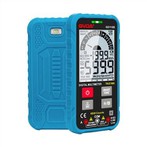The difference between magnetic (iron base) and eddy current (non-ferrous base) coating thickness gauge
Coating Thickness Gauge Magnetic (iron-based) to measure the thickness of non-magnetic coatings (such as aluminum, chrome, copper, enamel, rubber, paint, etc.) on magnetic metal substrates (such as steel, iron, alloys and hard magnetic steel, etc.)
Coating thickness gauge eddy current (non-ferrous base) measures the thickness of non-conductive coatings (such as: enamel, rubber, paint, plastic, etc.) on non-magnetic metal substrates (such as copper, aluminum, zinc, tin, etc.).
Magnetic (iron-based) Type F:
Measuring the thickness of non-magnetic coatings on ferromagnetic metal substrates such as steel and iron, such as: paint, powder, various anti-corrosion coatings, plastics, rubber, synthetic materials, phosphating layers, chromium, zinc, lead, tin, cadmium Wait;
Eddy current (non-ferrous) type N:
Measure the thickness of all non-conductive layers on non-ferromagnetic substrates such as copper, aluminum, stainless steel, such as: paint, powder, various anti-corrosion coatings, plastics, rubber, synthetic materials, phosphating layers, oxide layers, etc.;
FNF type:
It is a combination of the above F-type and N-type, which is what we often call a dual-purpose thickness gauge.






